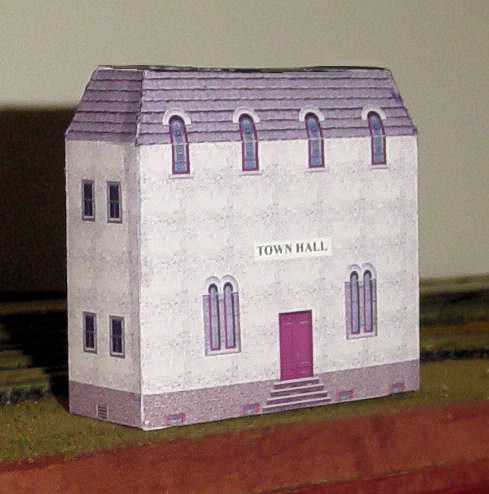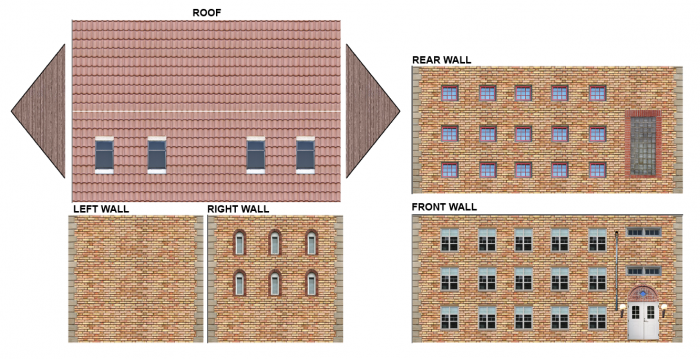

Mention is made of the use of tinplate for boilers and other super-structure, of chimneys and boiler mountings "turned from solid brass", and of the use of "Half-round wire" for beading, etc. The locos shown are fairly plain, and one is to a free-lance design. A letter from Beeson published in The Model Railway News in February 1926. The letter is reproduced below in three parts, and it contains interesting indications of the maker's practices at that time. In writing to The Model Railway News in 1926, Beeson mentioned and illustrated a loco of this kind, alongside two neat but plain-looking engines of more recognisable types (J.S.Beeson,"Three '0' Gauge Locos", letter, 2, 14, February, pp. Going further, some customers might even want models that were 'free-lance' designs, and a builder might be asked to provide them. For instance, an engine might be sold without any detailed backhead, or with a highly simplified one to meet a cost specification (see example below for R.M.Evans).

Pre-war and early post-war models may also provide indicators of the impact commercial pressures had in generating simplifications in the representation of features from full-sized prototypes. Viewed in their historical context these plainer models remain outstanding for their quality, even though they lack rivet detail or other refinements expected in later years. Yet many of his three-rail engines were much simpler. For example, Ganderton shows an LMS Princess for Bassett-Lowke and an LMS Compound see Ganderton, pp. There were certainly some highly-detailed and very exceptional locos made by Beeson before the war or in the 1940s. In effect, Beeson's 3-rail locos (including those sold under the names of other firms) can help exemplify ongoing and developing best practice within the commercial constraints and customer expectations of the vintage 0 gauge period when 3-rail coarse-scale running was widespread, when detailing remained modest on most models, and when precise "accuracy to prototype" carried less importance than in subsequent decades. Keen can be seen in the very first issue of the Model Railway News, in 1925, where the maker was referred to as "Mr. Certainly, his locos featured many times in the model railway press over a long period, and a tank engine made by Beeson for G.P. At the same time, it may be useful to show a group of Beeson's three-rail locos because his output formed such a significant component of the 'top end' of model loco production during the decades that are of most interest for this website. As quite a few Beeson locos were probably sold through Milbro, some coverage is in any case necessary to enhance our account of Mills products.


Some later or fully-finescale models will also be mentioned, but the central focus will be on the three-rail ones. Given the limitations in what is currently covered in the literature or accessible via the internet, this section of our website shows some examples of earlier and relatively plain Beeson models, made before the 1960s. provided the backbone of his income." (cited below, p. As regards the Beeson locos sold through other firms, Ganderton goes so far as to indicate that in the period between the two world wars the "special and production orders from other companies. This is despite the numerical significance of the pre-war and early post-war engines as a part of his total output, and their considerable historical interest. Less seems to have been reported systematically in the literature about the earlier (and often relatively more simplified) coarse-scale (or perhaps more correctly 'standard scale') engines that Beeson sold either directly or through other retailers. Locomotives made or rebuilt by Beeson in these later years command very high prices. 193), and the great artistry and engineering skill involved in his fine scale model-making in that period have been widely acknowledged. Levy (referenced in full below) refers to Beeson's own view that his work from the 1960s onwards was the most important (p. His super-detailed models have been illustrated and discussed in depth in various publications, and the locos from his later decades of production have been especially admired. J.S.Beeson is generally seen as one of the greatest of the professional model locomotive builders, and the engines he produced are exceptionally well made. A paper slip which may have come with the catalogue shown below, together with Beeson's change of address label. īeeson's earlier 0 gauge locomotives, including Beeson for Bassett-Lowke, Mills, Gresham Models, Exley and EvansĬopyright is retained by M.L.Harrison for all text and photos, except for those taken by other owners and enthusiasts. This section was most recently updated in July 2022.


 0 kommentar(er)
0 kommentar(er)
